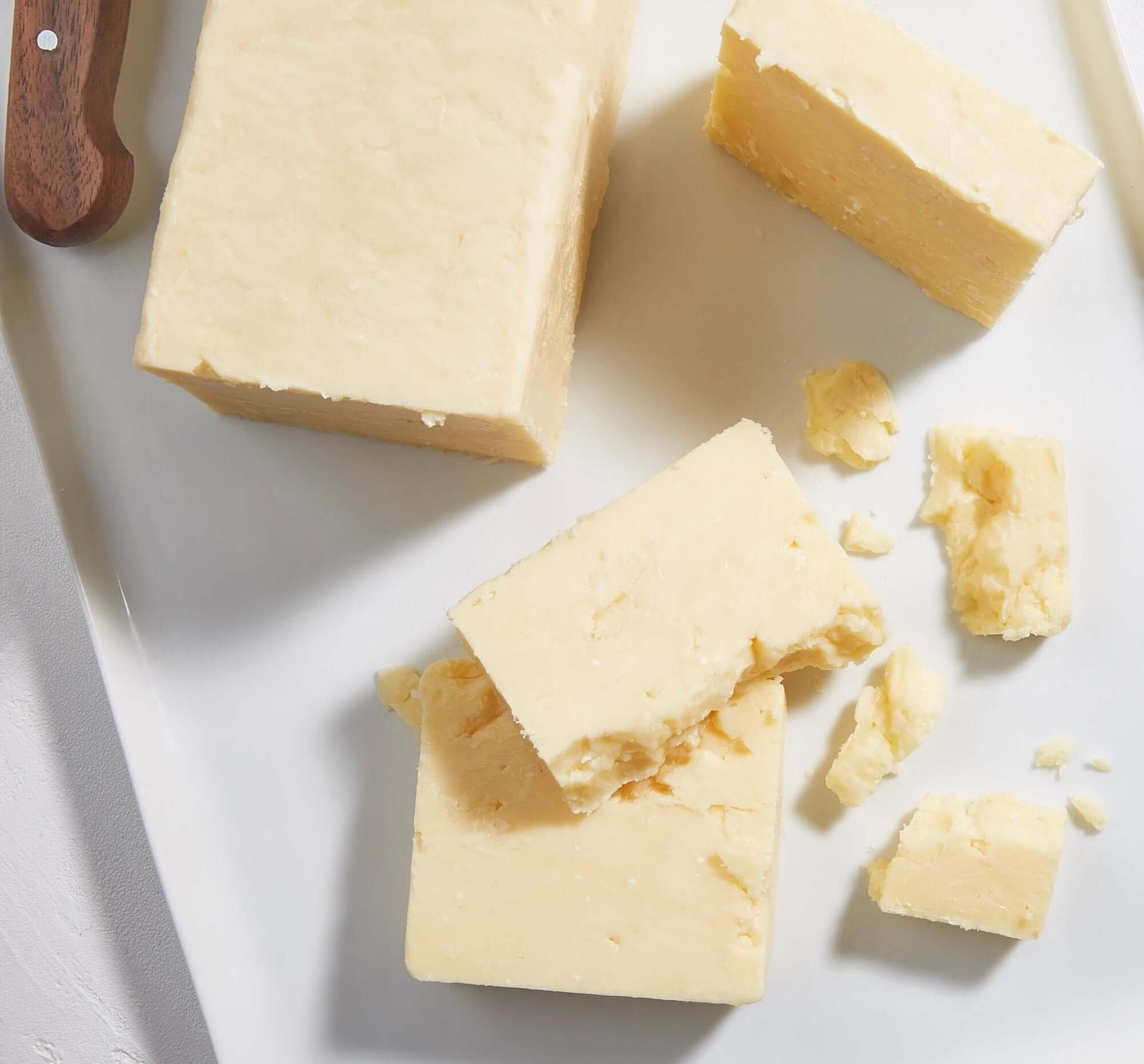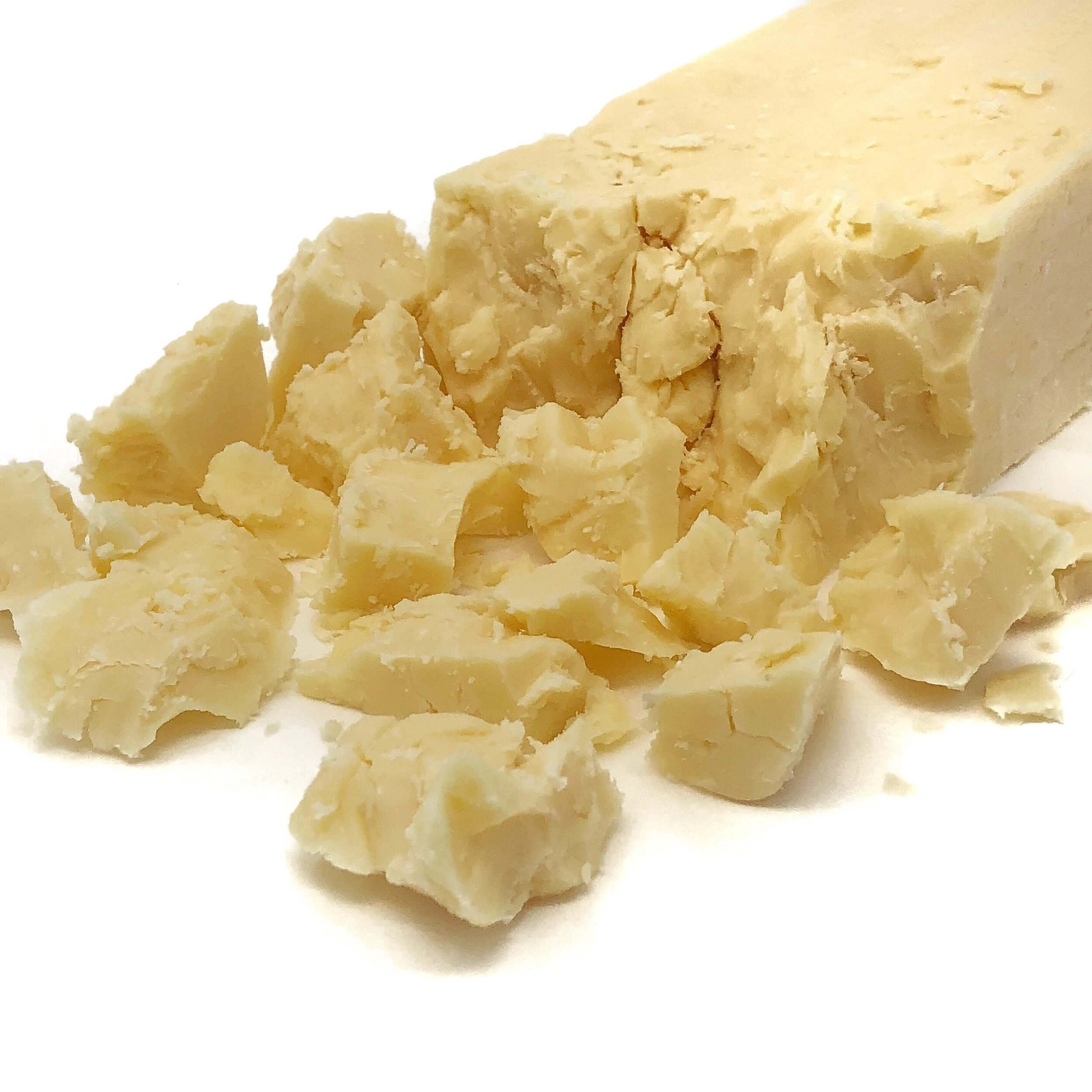Cheese 101: Prairie Breeze
In our new series of cheese profiles, we further examine those cheeses that have been called out as best sellers from places in our “Cheese Shops We Love” series. Next up, Milton Creamery’s beloved Prairie Breeze.
Some cheeses have perfunctory names that reference some element of their make or origin, some are strictly whimsical, just-for-the-fun-of-it monikers, and then there are those that are meant to be evocative. If you think a “prairie breeze” sounds like something entirely pleasant, that you might like to be experiencing right away, then there you are, in nature as in cheese. Milton Creamery’s Prairie Breeze is one of the most called-out cheeses by our retailers in “Cheese Shops We Love,” including recently by Pittsburgh’s Chantal’s Cheese Shop and Dallas’s Scardello Cheese, and in fact it is oft-awarded worldwide as well as Milton Creamery’s best seller.
What is Prairie Breeze?
Prairie Breeze courtesy of BKLYN Larder
The DNA of Prairie Breeze is an aged, white cheddar made by cheesemakers Rufus and Jane Musser, (and sons,) Pennsylvania transplants whose dream creamery exists in the Milton district of the rolling hills of Southern Iowa. Slightly sweeter and creamier than typical English cheddars, while still maintaining the crumbliness and savory qualities that make it recognizable as cheddar, it is regularly described as a cross between a cheddar and either an Alpine style cheese or a gouda.
History of Prairie Breeze
Cheddar cheese proper dates back to the 12th Century, though American-made cheddar cheese is (obviously) much younger than that. Milton Creamery specializes in making cheddar cheeses, having released their first batch in 2006, after Rufus and Jane Musser transitioned from dairy farmers to cheesemakers in order to move to a more customer-facing business and to help bring income to their neighbors. Milton Creamery isn’t a dairy itself, only a creamery, where milk is sourced from small, local Mennonite and Amish farms. Prairie Breeze has been on the Milton’s menu from nearly the beginning, winning its first of many awards in 2009 in the US Cheese Championship, and quickly becoming its most beloved and best-selling cheese.
How Prairie Breeze is Made
Prairie Breeze is made from pasteurized cow’s milk collected from various small farms, using vegetarian rennet, and no additional color. It is shaped in a long, rectangular block, rather than the round truckle typical of cheddars. Like all cheddars, the cheddaring of the curds for Prairie Breeze results in a crumbly, pull-apart texture in the cheese. Unlike all cheddars, Prairie Breeze is aged for a minimum of 9 months in particular conditions that help it maintain a creaminess while also giving rise to a distinct, tyrosine crunch within the cheese, one of its most prized attributes.
Tasting Notes
It’s nearly impossible to find a tasting note for Prairie Breeze that doesn’t marry its cheddar pedigree with a nutty melter like an Alpine or gouda cheese. Bklyn Larder’s website describes it as having nutty tones as well as “fresh canned pineapple,” while iGourmet points out its distinctly savory finish. NYC’s Eastern District notes that it is “nutty, acidic, and juicy.”
Pairings
Erika Kubick of Cheese Sex Death fame once suggested a pairing between Prairie Breeze and Flamin’ Hot Cheetos on her Instagram account, and I freely admit, I tried it, and I loved it. Because of its undercurrent sweetness, Prairie Breeze can really take on spicy foods better than your average cheddar, plus it has the umami to strike those savory chords as well.
Rich Rogers of Scardello Cheese notes that Prairie Breeze is an excellent melter and makes a “killer grilled cheese,” and it is also featured on the menu at Murray’s sister operation Murray’s Mac and Cheese. As a cheese that steps equally forward in both sweet and savory tones, the best accoutrement pairings also emphasize both attributes, as with deeply caramelized onions or sun-dried tomatoes.
While Prairie Breeze can really place nicely with just about any wine, including bold reds that can wither more delicate cheeses, its true marriage is with a buttery chardonnay, such as Edna Valley Chardonnay a 2022 NY International Wine Competition Gold Medal Winner, for a flavor outcome akin to kettle corn.




